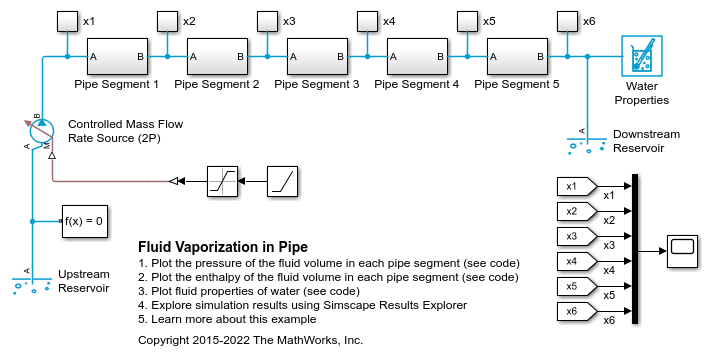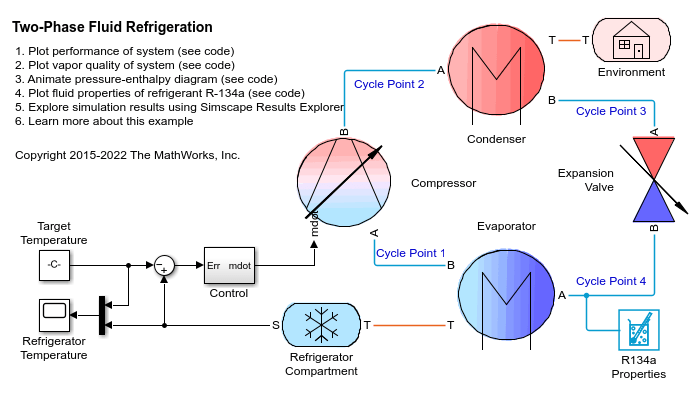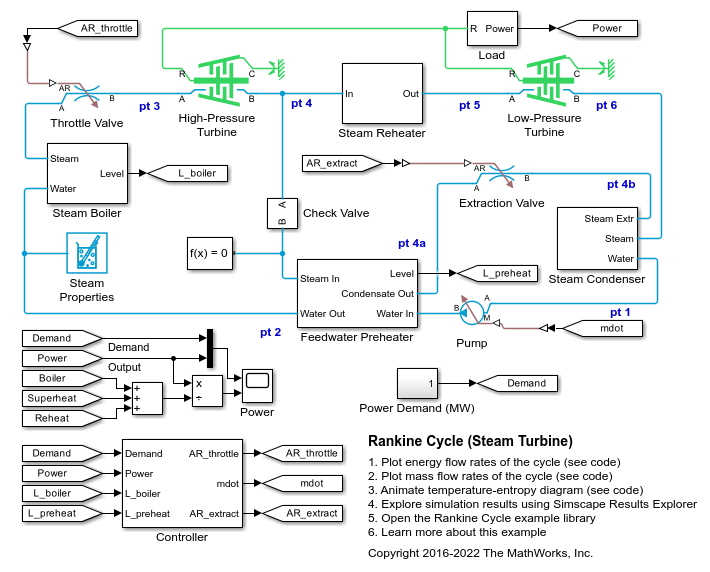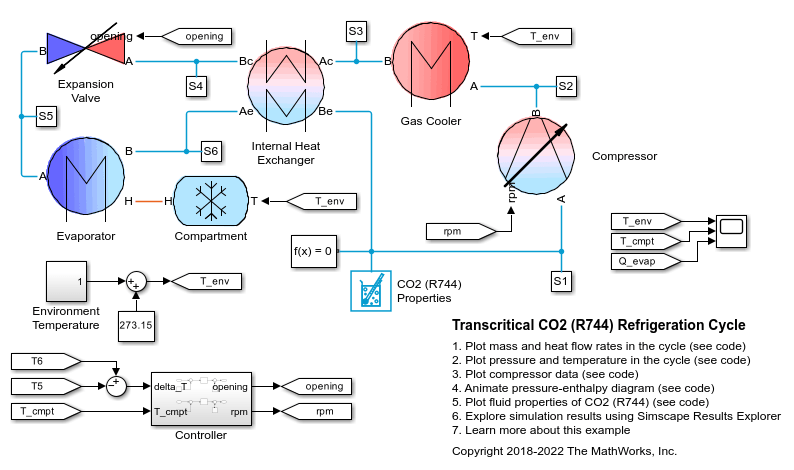两相流体系统
浏览关于两相流体系统建模、控制和仿真的示例。
相关信息
精选示例
两相流体中的空穴
此示例展示了如何使用两相流体组件对空穴进行仿真。此模型是由振荡压力源驱动的平移机械转换器。在压力源循环的负部分期间,流体会产生空穴,以减少转换器产生的力。因此,转换器位移会漂移并且不返回到起始位置。
Fluid Vaporization in Pipe
Model the vaporization of water to generate steam. Liquid water enters the pipe at 370 K at a rate of 1 kg/s. The pipe is heated to 1000 K, causing the water flowing inside pipe to saturate.
两相流体制冷
此示例使用两相流体组件对蒸气压缩制冷循环进行建模。压缩机驱动 R-134a 制冷剂通过一个冷凝器、膨胀阀和蒸发器。离开压缩机的热气体通过向环境传递热量在冷凝器中冷凝。当制冷剂通过膨胀阀时,压力会下降。压力下降会降低制冷剂的饱和温度。这使它在从冷藏室吸收热量时在蒸发器中沸腾。然后,制冷剂会返回压缩机以重复该循环。控制器会打开和关闭压缩机,以将冷藏室温度维持在所需温度的频带范围内。
朗肯循环(汽轮机)
此示例基于朗肯循环对汽轮机系统进行建模。该循环包括过热和再加热,以分别防止高压涡轮和低压涡轮中发生冷凝。该循环还通过将抽取的蒸汽传递到闭环式给水加热器来实现再生,以加热水并提高循环效率。
MATLAB Command
You clicked a link that corresponds to this MATLAB command:
Run the command by entering it in the MATLAB Command Window. Web browsers do not support MATLAB commands.
选择网站
选择网站以获取翻译的可用内容,以及查看当地活动和优惠。根据您的位置,我们建议您选择:。
您也可以从以下列表中选择网站:
如何获得最佳网站性能
选择中国网站(中文或英文)以获得最佳网站性能。其他 MathWorks 国家/地区网站并未针对您所在位置的访问进行优化。
美洲
- América Latina (Español)
- Canada (English)
- United States (English)
欧洲
- Belgium (English)
- Denmark (English)
- Deutschland (Deutsch)
- España (Español)
- Finland (English)
- France (Français)
- Ireland (English)
- Italia (Italiano)
- Luxembourg (English)
- Netherlands (English)
- Norway (English)
- Österreich (Deutsch)
- Portugal (English)
- Sweden (English)
- Switzerland
- United Kingdom (English)




